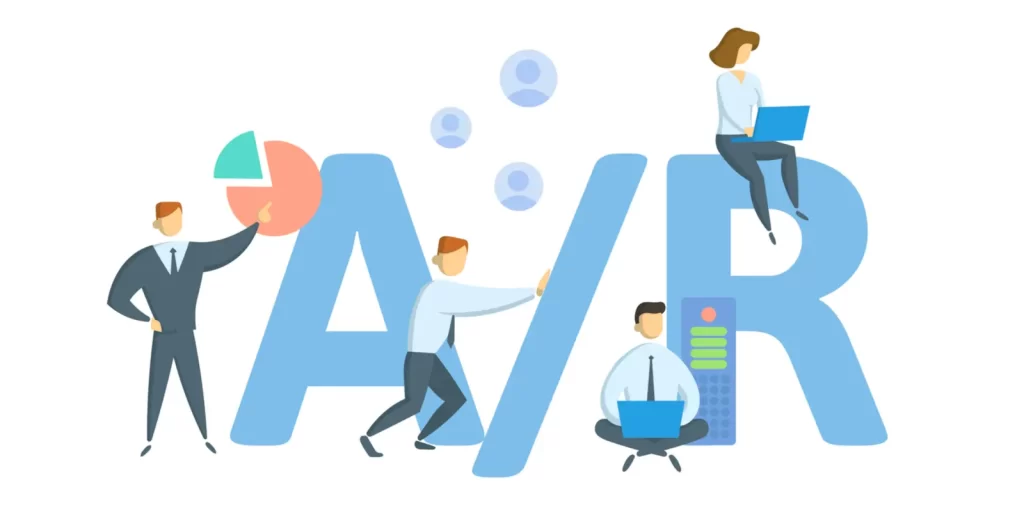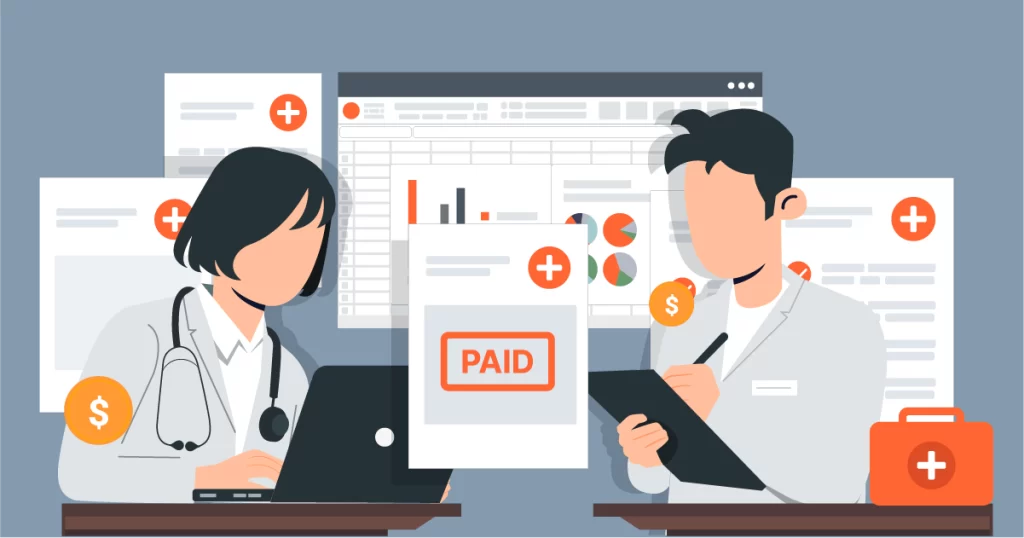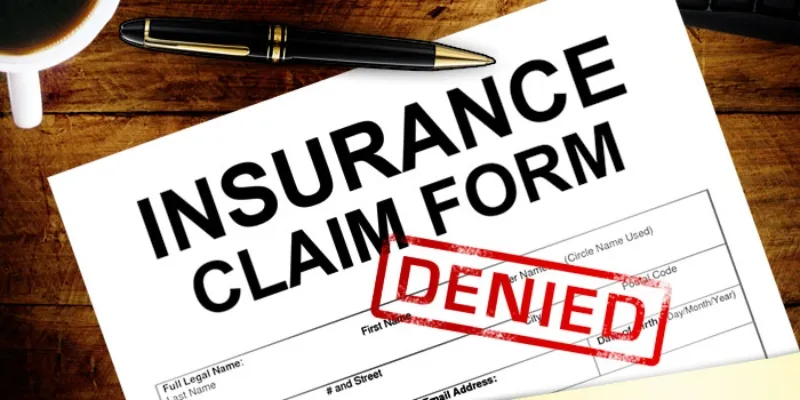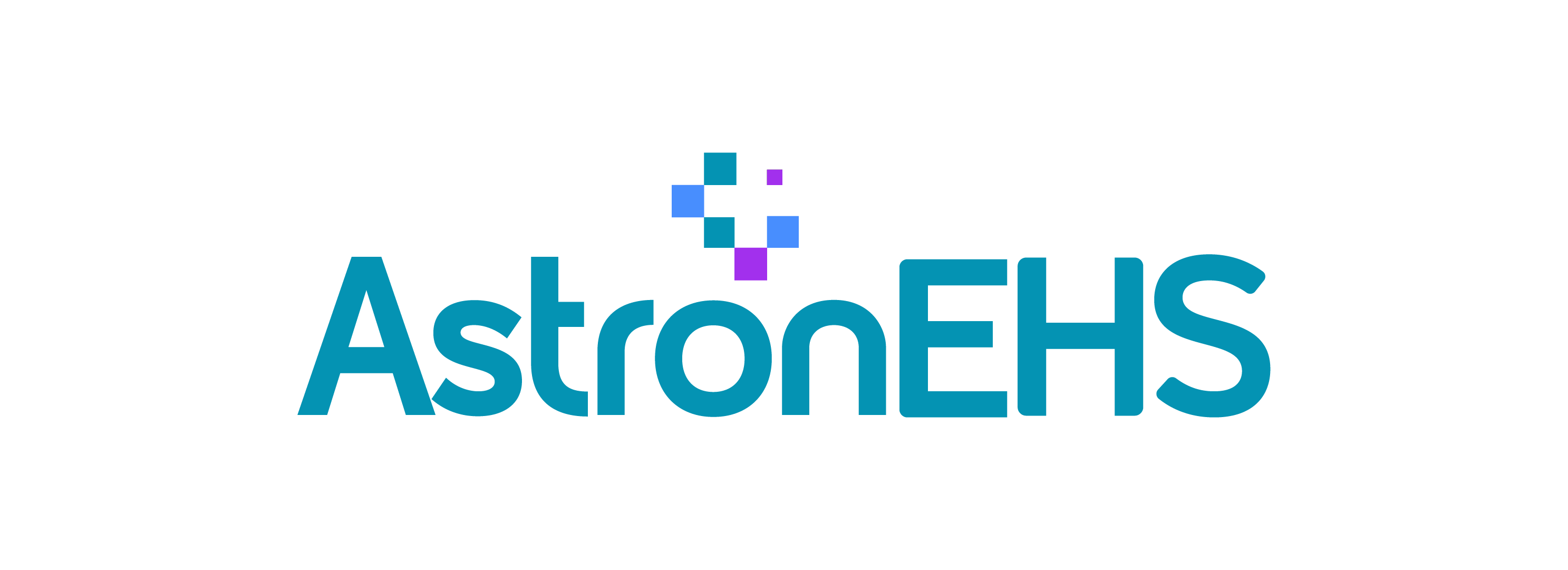Accounts receivable management is an ongoing management task for doctors in private practice.
As the financial responsibility of healthcare transfers to the consumer in the form of rising deductibles and copays, physicians who lack a dependable collection method are in jeopardy. Your cash flow will be favourable if you manage your accounts receivable, and you will keep the money.

Accounts Receivable: Keeping up with insurance payments keeps a dental practice healthy.
Let’s first know what accounts receivable management is. What are the goals of accounts receivable management in health care? Why improve AR management? How to reduce insurance claim denials.
This guide to accounts receivable management in the healthcare industry covers every topic you need to know about how to improve this part of your practice.
What are Accounts Receivable?
Accounts receivable (AR) is the money owed by a company’s customers for products or services received but not yet paid for. It is a legal duty resulting from a commercial transaction. When a consumer purchases a product on credit, the amount due is added to the accounts receivable.

The faster the accounts receivable are paid, the better, since you can use your receivables to pay off liabilities such as accounts payable. AR consists of amounts due from patients, insurance companies, or other guarantors.
What are the Goals of Accounts Receivable Management in Healthcare Practice?
Accounts Receivable (AR) management aims to maintain maximum cash flow by minimising the collection period and the associated cost.

The offices that will manage strive to establish a standard process for managing account receivables (AR). That is, to manage the patients from beginning to end, from scheduling a new appointment to collecting their final payment. So train your staff in this process, communicate clearly with patients, and measure their progress over time.
You must be asking how I should improve my Accounts Receivable Management
As you know, AR (Accounts Receivable) is a vital function of all businesses; the way you manage the AR will directly impact your cash flow and ultimately affect your healthcare organisation’s bottom line.
There are many benefits to having an efficient accounts receivable management team, which is clear, but organisations still need to catch up. So keep the outdated practice from holding your organisations behind the times. Learn how to improve your AR processes so your team can grow and become more efficient and proactive. Take responsibility and new projects that don’t involve tracking down your invoice.
Why does Account Receivable Management matter so much for Your organisation?
Accounts receivable (AR) management encompasses billing customers and collecting payments for goods or services.

An efficient accounts receivable management process helps maintain a healthy cash flow to cover operating costs and scale your business. Conversely, inadequate cash flow can result in severe consequences, such as hindered growth or bankruptcy. This modification necessitates new invocation and billing attention.
- Costs are shifting to patients.
- Improve cash flow.
- Reduced or Avoided “AR” taxes
- Hidden costs
- Interest
- Inflation
- Administration costs
- Bad Debt Expense
- Hidden costs
Costs are Shifting to Patients
In recent years, insurers have shifted more of the cost burden onto patients in the form of higher deductibles and copays. From 2006-2016, the average payments by enrollees towards deductibles increased by 176%, from $151 to $417, according to the Kaiser Family Foundation.
Consumers opt for the lower-priced insurance with the high deductible because they are optimistic they won’t have to use it. When the deductible shows up, they are shocked. They sometimes need to understand that deductibles require funding on their end.
-Andrew Graham
Unless a patient has saved money in a health savings plan, the doctor must compete for the dollars a patient has for every other discretionary expenditure. And as you can probably guess, patients could be more reliable when paying significant out-of-pocket medical expenses.
Consumer habits will be around for a while. The rise in popularity of low-cost, high-deductible plans will likely continue. This trend behoves medical and dental practices to optimize their billing and accounts receivable processes to collect patient payments and maintain healthy business cash flow.
Improve Cash Flow

As patients are expected to pay more, the practice’s risks of a cash flow shortage increase. When deductibles reset, cash flow is especially important during the first few months of the year. Improving the accounts receivable management processes in healthcare is one of your best defences against cash flow shortages.
In general, managing your cash flow in the healthcare industry is a tricky business. It can take time to predict with certainty how much revenue you will generate each month, how much will be returned, or when you will get paid. Your accounts receivable process has a lot to do with smoothing out those fluctuations so that you can more accurately predict the business’s cash balance.
Reduced or Avoided AR Taxes
The cash flow management process in the healthcare industry is tricky or complicated because it is difficult to predict how much revenue will be generated each month or how much you will get paid.

So accounts receivable management has a lot to do with smoothing out the functions to get a more accurate prediction of the cash balance of your organisation.
If you don’t resolve the AR (accounts receivable), you could leave a lot of money on the table.
- Paying yourself! Paying your staff.
- Investing in new equipment.
- Making marketing part of your practice
- It is paying off student loans.
Minimising the collection period can also reduce the costs associated with managing a large AR balance.
Hidden Costs

Expenses that are generally not included in the purchase price for a piece of equipment or machine, e.g., maintenance, supplies, training, support, and upgrades, are hidden costs. This cost is not showing up in your income statement; it is not the expense you incurred, but it is an essential part of recognising this cost. It is associated with the cost of interest and inflation.
Hidden costs are unforeseen expenses added to or subtracted from your purchases.
Interest
Every balance that hits your accounts receivable is the same as an interest-free loan. You have provided the service but have agreed to accept payment later. Instead of the late payment, if you had received the charge on the same day the service was performed, you could have invested it because the interest would have been an opportunity cost to your practice.
Some practices charge monthly interest on the patient’s balance over 30 days; for example, let us consider that 100K is the account receivable balance, and there is an interest rate of 1.5% so the other equivalent cost would be 18K every year, or per annum.
We just mentioned this as a reminder that there are real financial implications for extending free credit. If a practice does charge interest on patient balances, it must comply with the regulations put in place by the Federal Truth in Lending Act. So this is why most healthcare organisations don’t practice it.
Inflation
Inflation means the rise in prices, which is often expressed as a percentage, which means that a unit of currency effectively buys less than it did in prior periods. Here is the monthly inflation rate for 2022.

Monthly inflation at 0.41% was still very high for the fourth quarter, traditionally hostile or at least very close to zero.
But although high, October 2022 monthly inflation was still lower than in October 2021. So the annual inflation rate for the 12 months ending in October 2022 fell to 7.75%.
Inflation was down from 8.20% in September 2022. According to inflationdata.com
Administration Costs
Administrative expenses linked with accounts receivable management include the salary you pay your employees to send statements and call patients. Also included is the price of postage and any other extraneous expenses incurred while managing AR. These are the tangible costs that you see on your monthly financial statements.

SwervePay Health Services estimates that the administrative cost of mailing paper statements is around $2.42 per patient. In addition to collecting from patients, part of the revenue cycle management will include dealing with third-party payers or insurance companies.
Keep a look out for debts receivable from insurance companies. Follow up with the carriers if balances exceed 30 to 45 days. Insurance companies are normally obligated to pay a “clean claim” within 45 days of receiving it.
Even though insurance companies should pay, they are quick to reject claims for a multitude of reasons. Invalid insurance, missing information, and coding errors are just a few.
Your accounts receivable team should always work on rejected insurance claims first because it is the easiest money to collect. If you find that your staff is dealing with many rejected claims, track why and fix the problems through your process on the front end of the claim.
Bad Debt Expense
A bad debt expense is recognised when a receivable is no longer collectable because a customer cannot fulfil their obligation to pay an outstanding debt due to bankruptcy or other financial problems. Companies that give their customers credit report bad debts as a provision for credit losses or an allowance for doubtful accounts on their balance sheets.

For this reason, we suggest focusing on your patient responsibility accounts receivable balances according to the following ageing buckets:
- 0-29 days (current)
- 30-89 days
- >90 days
How Can We Improve Accounts Receivable (AR) Management in Healthcare Organisations?
In the current situation, patients are more focused and pay more attention to the values, quality of service, and care they receive. This comes in response to the higher out-of-pocket costs.

When patients are shocked by the bill they have received and are responsible for paying a sizeable out-of-pocket deductible, the payment collection process becomes more complex. To avoid these mistakes, the AR process must focus on serving patients’ needs by managing patients’ expectations, offering flexible payment choices, and training the staff. Also, invest in the automatic billing system for easy work.
Let us discuss some tactics to improve accounts receivable in healthcare:
- Manage patients’ expectations.
- Offer flexible payment options.
- Train the staff for better communication.
- Be direct and show respect.
- Use a script.
- Spend money on billing equipment.
How to Reduce Insurance Claim Denials
Your insurance claim was denied! It is something you do not want to hear.
A denied claim means it is returned to the pavilion to appeal once again, and long waiting hours and more costs ensue.

Claim Denials Management is often confused with rejected claims.
Let us understand what claim denials are before we try to avoid them:
- These claims are acknowledged by the insurance companies at first and then marked as denied claims at the time of processing.
- Most of the mistakes in these claims are in the pre-authorization details, which will probably be found when the shares are being processed.
- The reasons could be information loss, claims for services that do not fall under the claim umbrella, inaccurate patient details, and policies that insurance companies don’t address.
Re-submitting the denied claim without any research and failing to comprehend why the claim got denied will cost you extra time, loss of revenue due to unpaid claims exempting the provider, and, most importantly, purposeless stress.
Focus on the front desk
Accounts receivable management is not a standalone backroom operation. The front desk controls the majority of insurance claim rejections.

In addition to answering the phone and checking in patients, the front desk staff is often responsible for the following:
- Verify patient insurance and demographic information.
- Collect patient copays and estimate deductibles.
- Collect overdue balances from previous visits.
- Scan patient insurance cards into the billing system.
- Post all received payments.
- Prepare a daily collection summary with the deposit slip for the manager.
- Deposit checks into the bank.
Always Verify Insurance Benefits

#1 reason for rejected claims for most practices is Invalid insurance.
- Verify benefits for every patient on every visit.
- Utilise your billing system to automate insurance verification.
- Scan a copy of the patient’s insurance card into the billing system so you can go back and check for an incorrect ID number, patient name, or demographic information.
- Managers should confirm that their staff is performing verifications daily.
- Keep track of the number of false insurance claims and reward the team when they reach their target.
